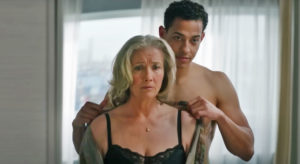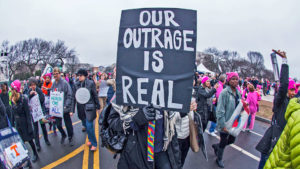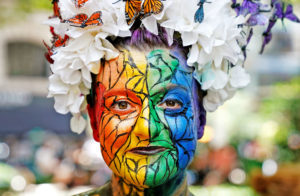The number of children killed by preventable accidents declined in every UK nation between 1980 and 2010. The number of children killed or seriously injured by a car gets lower by the year; the incidence of severe burns has declined over time across all of Europe and is now very low. Empirically speaking, children have never been safer.
But this doesn’t seem to have yielded a generation that feels safe. Instead, we have one that feels so unsafe they want to use political process to make things better. That, at least, seems to be the upshot of a new HEPI poll which revealed that (along with broad and rising support for censorship, trigger warnings, and firing problematic professors) 79% of undergraduates think students’ demands for “safety” should always be met. And a look at the factors driving this seismic change suggests a startling conclusion: that we should take “woke” claims of “trauma” much more seriously — but also wholly disregard “woke” claims about their origin.
For it’s not the universities encouraging young people to make “safety” a political demand. Rather, such calls seem to originate with students themselves. In the recent persecution of Kathleen Stock at Sussex University, for example, administrators may have supported or at least failed to halt her harassment. But protests were led by undergraduate activists. One placard said “we were meant to be safe here”.
Nor do such demands start at university, but erupt in schools as well. In May, a British sixth-former was hounded out of her school for questioning consensus views on trans rights, and instead of defending her, the school apologised to other pupils for not maintaining a “safe space”.
I asked Andrew, head of sixth form at an independent girls’ school, what he thought was driving the hunger to be safe. He told me that some of it is grounded in reality: in his observation many of his pupils are “genuinely apprehensive about the future”. Their worries vary from the abstract, such as climate change, to more concrete fears about economics, the job market and declining prospects for home ownership — worries that are objectively far from groundless.
In the view of sociologist Matthew Goodwin, a key driver of the new safety-oriented intolerance is the internet. The deputy head at one London state school, James, backs this up: in his view, social media makes it “much easier” to “isolate oneself from opposing (and discomforting) arguments”. His view resonates with Andrew’s observations of how his pupils behave: “Those who are most concerned about safety”, Andrew says, “are the ones who are very ‘online’.”
And indeed, a defining feature of online sociality is filter bubbles, where we come to think everyone shares our opinions because algorithms filter out content from anyone who doesn’t. One pupil, Andrew tells me, goes even beyond the algorithmic hygiene of her filter bubble to create her own, proactively: she routinely checks an author’s biography for politically disagreeable views and discards “books written by anyone with whom she disagrees politically or philosophically”.
It makes sense, too, that a cohort accustomed to resolving conflict by muting, unfollowing or blocking disagreeable voices might struggle in real-world conflict. In the view of Anne, an American professor, “a big part of it is conflict aversion”, which means “any emotional discomfort they feel from disagreement (whether a peer or a text) is interpreted as a personal attack and ‘unsafe’”. In response to this poverty of interpersonal skills, she says, there’s an expectation that “professors are responsible to create conflict-free and tension-free environments”.
This tallies with a recent report on American campuses, where Title IX protections intended to shield women against sex discrimination have become an expansive means of refereeing interpersonal disputes, one Title IX coordinator tells the author “she sometimes thought of her job as running ‘The Break Up Office’”. In other words: instead of resolving an unhappy break-up among themselves, students seek redress via official sex-discrimination policies.
Another factor that might contribute to such conflict aversion is well-meaning school policies designed to protect schoolchildren. My own daughter isn’t a university student at the other end of her educational journey; and yet her (lovely, attentive, empathetic) primary-school teachers regularly drum home the message that intractable conflict is best resolved by telling a teacher. It’s often struck me that if widespread, over time such policies might well result in more adults whose first response to interpersonal conflict would be seeking resolution via an authority figure.
And perhaps this starts before schools, too. Free Range Kids, a project and book by American mum Lenore Skenazy, argues that in the name of “safety”, over-protective parenting — or, as Jonathan Haidt and Greg Lukianoff put it in 2018, “coddling” — is undermining young people’s agency, confidence and resilience.
And it’s difficult to dispute that a fixation on “safety” pervades both products and services aimed at children and also behavioural norms. This inevitably shapes children’s experience, even in family cultures that aren’t especially anxious about safety. I realised how deep this reaches when my own daughter became agitated because I started the car moving, slowly, on our driveway, before she’d finished fastening her seatbelt.
This still doesn’t feel like the root of it though. One of the first student eruptions of this nature to make the news took place at Yale in 2015, where two faculty members, Nicholas and Erika Christakis, wrote to students encouraging them to tolerate even offensive Halloween costumes. In the ensuing uproar one young woman told Christakis that the college “is no longer a safe space”.
What shook the world about the 2016 Yale video, and remains startling about the many subsequent similar scenarios at schools, universities and the wider world is how radically dysregulated many politically-engaged young people genuinely seem to be. They actually are that upset. For many proponents of “wokeness”, political issues genuinely seem to cause dramatic emotional highs and lows — so much so in fact that the phrase “literally shaking and crying” is widely used to parody this kind of high-pitched activist tone.
But while the fragility in question often seems to be channeled into political activism, what if it doesn’t originate there? A 2020 Pew study reported that the combination of progressivism and youth strongly correlates with mental health difficulties, a finding gleefully seized upon to claim that progressivism drives people crazy. But it’s possible that this has the causality backwards, and it’s more that unhappy people seize upon what Jason Manning has called “Victimhood Culture” to justify an already-endemic state of maladjustment.
Consider this short article, published by an Australian university, which describes “coping with a meltdown”. Symptoms of a “meltdown” reportedly include shaking, terror, poor decision-making, and destructive self-soothing, and overwhelming emotions such as helplessness, anger and fear. According to the article, we all experience “meltdowns”. Except actually no, we don’t.
And the “meltdowns”, the emotional dysregulation and demands for safety — all the behavioural tics characteristic of militant wokeism — map startlingly closely onto common symptoms of pre-verbal trauma. That is, they’re consistent with symptoms displayed by children abused or neglected before they learned to talk.
The child development theorist Erik Erickson characterised the first stage of infancy as where we develop a foundational confidence that a caregiver will be there when we need them. And where this is interrupted by traumatic experiences, the sense of chronic threat can last forever. As psychotherapist Dorothy Scotten argues, pre-verbal experience of abuse or neglect then means “the infant loses the sense of safety and begins her/his life in a state of psychological mistrust and instability”. Long-term effects of such trauma can then include “a feeling of helplessness, residual fear and lack of safety” along with self-destructive behaviours such as substance abuse, difficulty forming relationships, and overwhelming emotions such as “infantile rage”. Not a million miles, in other words, from the supposed symptoms of “meltdown”.
Another paper describes a traumatised child who expressed “feelings of being unsafe and inadequately protected by caregivers and an intense behavioural regression to an infantile level at home”. This included acting out; the child “would camp outside his mother’s bedroom door pretending to be a ‘lost puppy’ wanting to be taken in”. The longing this expresses for a place of absolute safety is echoed in Christakis’ confrontation with the Yale student body. Here several tearful young women berate Christakis about how Yale was a “home” for them — but now, as one puts it: “Somehow this home is broken.”
It seems unlikely that every single one of these young people has been profoundly physically abused. What about neglected, though? In the Seventies, John Bowlby and Mary Ainsworth documented the way young children form a strong attachment to a single caregiver. They concluded that attachment took three broad forms: secure, ambivalent or disordered.
Most attachments styles fell within secure or ambivalent patterns, they found. Children with secure attachment were confident that their caregivers would respond in an attuned way; those with an ambivalent attachment pattern could either be anxious and clingy or avoidant. And disordered attachment was found in neglectful, frightened or frightening caregiving situations such as addiction or violent homes.
Are we looking at a mass outbreak of disordered attachment? Perhaps; for the other generational change that swept across the West around the same time as the internet was increased uptake of institutional childcare. In 1980, the year after I was born, it was estimated that around a third of mothers had jobs. By 2011, though, a UCL study reported that among the middle class, stay-at-home mums of young children were increasingly a rarity concentrated among the richest and poorest, while in the middle class nearly 70% had jobs before their child was one year old.
A great deal of research has been done on the effect of childcare on attachment. Results vary considerably by geography and the age of children, but a review of results concluded that there’s likely to be some effect. And, importantly, especially where care is poor-quality and infants are very young, long hours in childcare pose a significant risk factor for disordered attachment.
There are, to my knowledge, no studies on whether any correlations exist between an institutionalised early infancy and an unhappy young-adult preoccupation with “safety”. But if there is a correlation, it might also explain the greater American prevalence and intensity of this type of dysregulated youth politics: American women have no right to maternity leave, and one in four American mothers is back at work within two weeks. That’s a lot of tiny babies in institutional childcare.
Something as seismic as the change in sensibility we’re seeing is unlikely to have a single cause. But the step change in childcare uptake happened just long enough ago for those kids to be arriving in adulthood now. It’s possible that genuine worries for the future, internet filter bubbles, and a culture of safetyism have landed, for some, on psyches that were fragile almost from birth.
And it’s possible that this subset was predisposed to fragility, by an early infancy spent in “care” settings long on stimulation, and short on attuned caregiving and cuddles — a setting inimical to forming the kind of secure or even ambivalent attachment patterns needed for healthy functioning as an adult. If this is so, it’s also possible that much of contemporary student activism isn’t really about race, gender, climate or whatever so much as it is about young adults desperately trying to elicit the care from a new institution, that they missed out on in a different institutional setting long before they even formed conscious memories.
If this so, we should take student claims of distress and trauma more seriously – even as we dispute their origins. And we should also be cautious about taking such individuals’ political demands at face value. For it may be that some of our angriest activists have simply seized upon the opportunity offered by “Victim Culture” to make a renewed plea for something they craved as a baby, and didn’t receive: a reliable sense of being held, and loved, and safe.
Disclaimer
Some of the posts we share are controversial and we do not necessarily agree with them in the whole extend. Sometimes we agree with the content or part of it but we do not agree with the narration or language. Nevertheless we find them somehow interesting, valuable and/or informative or we share them, because we strongly believe in freedom of speech, free press and journalism. We strongly encourage you to have a critical approach to all the content, do your own research and analysis to build your own opinion.
We would be glad to have your feedback.
Source: UnHerd Read the original article here: https://unherd.com









